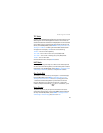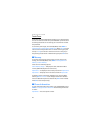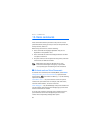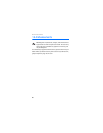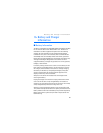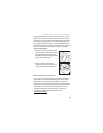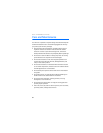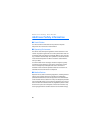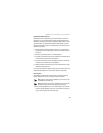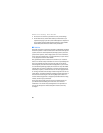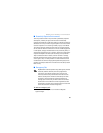Battery and Charger Information
82
Do not short-circuit the battery. Accidental short-circuiting can
occur when a metallic object such as a coin, clip, or pen causes
direct connection of the positive (+) and negative (-) terminals of
the battery. (These look like metal strips on the battery.) This might
happen, for example, when you carry a spare battery in your pocket
or purse. Short-circuiting the terminals may damage the battery or
the connecting object.
Do not dispose of batteries in a fire as they may explode. Batteries
may also explode if damaged. Dispose of batteries according to
local regulations. Please recycle when possible. Do not dispose as
household waste.
Do not dismantle, cut, open, crush, bend, deform, puncture, or
shred cells or batteries. In the event of a battery leak, do not allow
the liquid to come in contact with the skin or eyes. In the event of
such a leak, flush your skin or eyes immediately with water, or seek
medical help.
Do not modify, remanufacture, attempt to insert foreign objects
into the battery, or immerse or expose it to water or other liquids.
Improper battery use may result in a fire, explosion, or other
hazard. If the device or battery is dropped, especially on a hard
surface, and you believe the battery has been damaged, take it to a
service center for inspection before continuing to use it.
Use the battery only for its intended purpose. Never use any
charger or battery that is damaged. Keep your battery out of the
reach of small children.
■ Nokia Battery Authentication Guidelines
Always use original Nokia batteries for your safety. To check that
you are getting an original Nokia battery, purchase it from an
authorized Nokia dealer, and inspect the hologram label using the
following steps:




